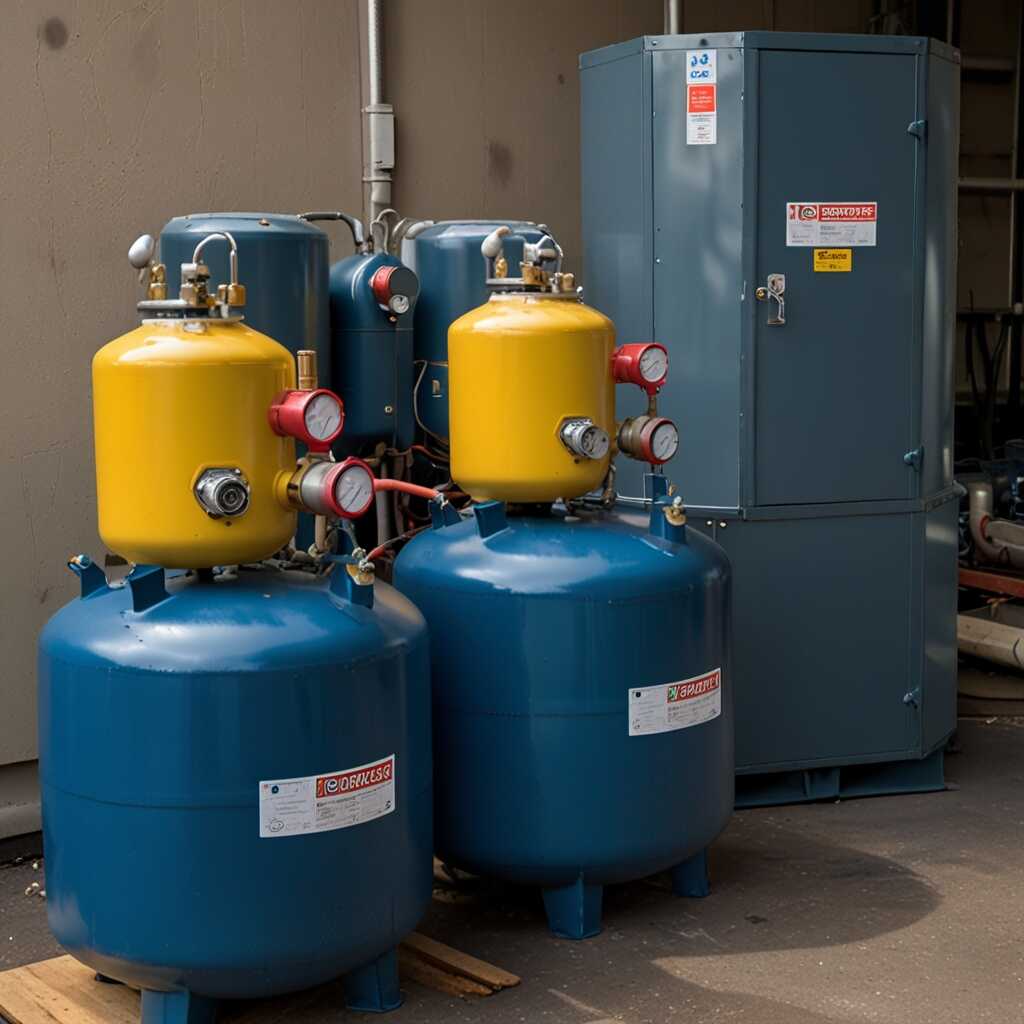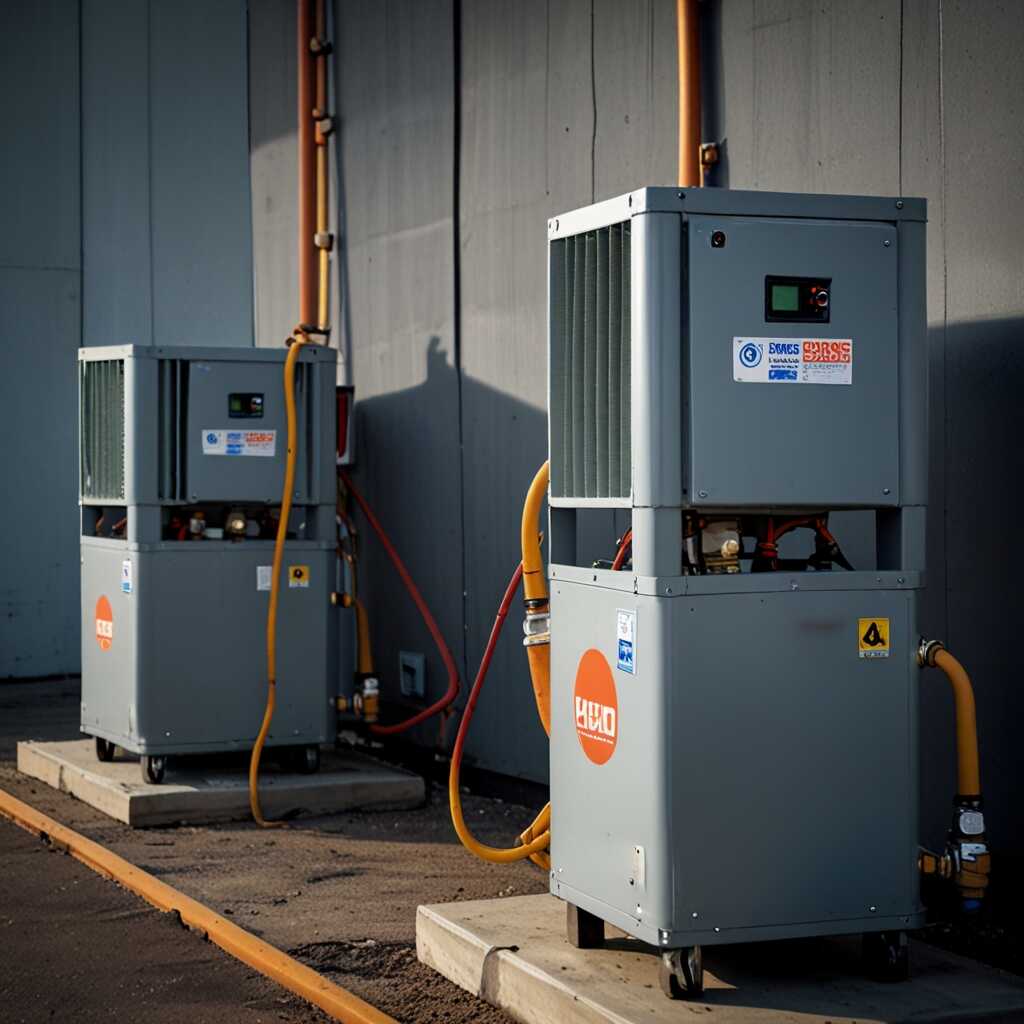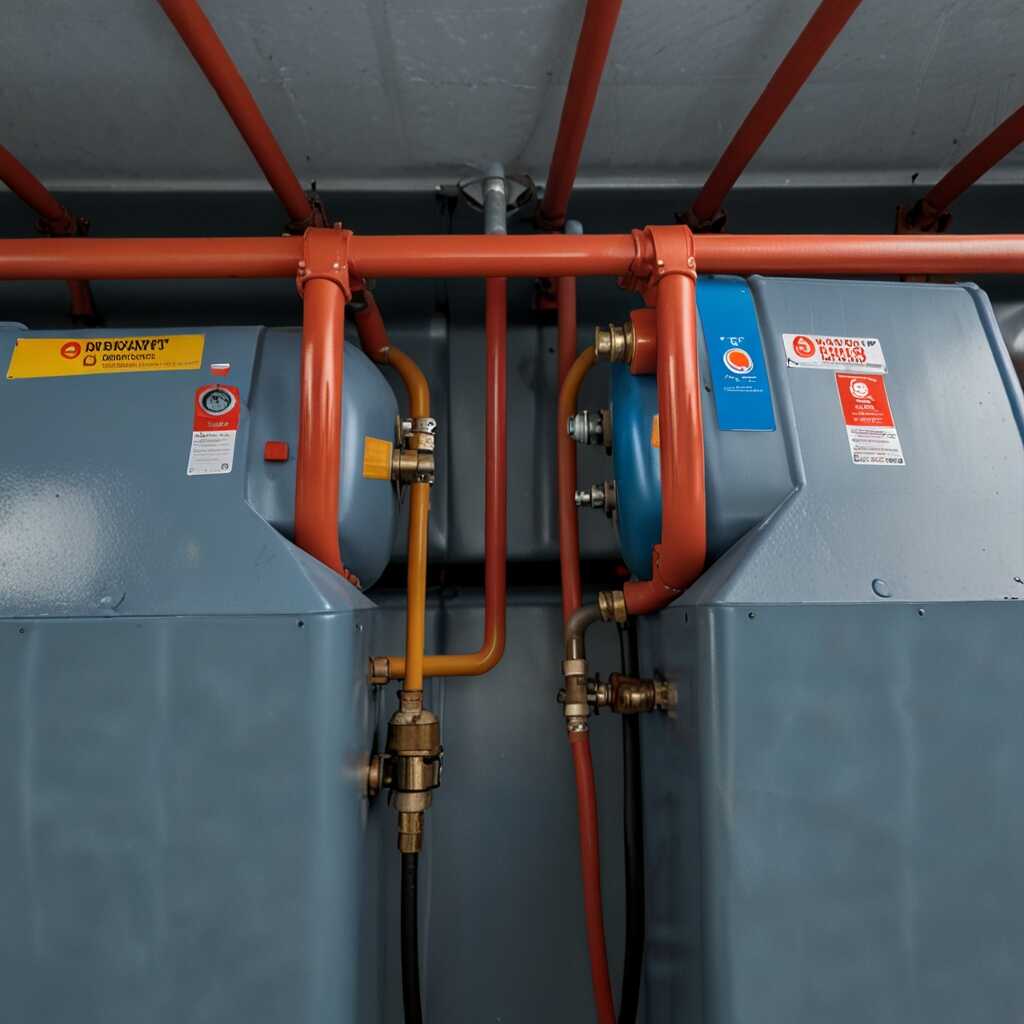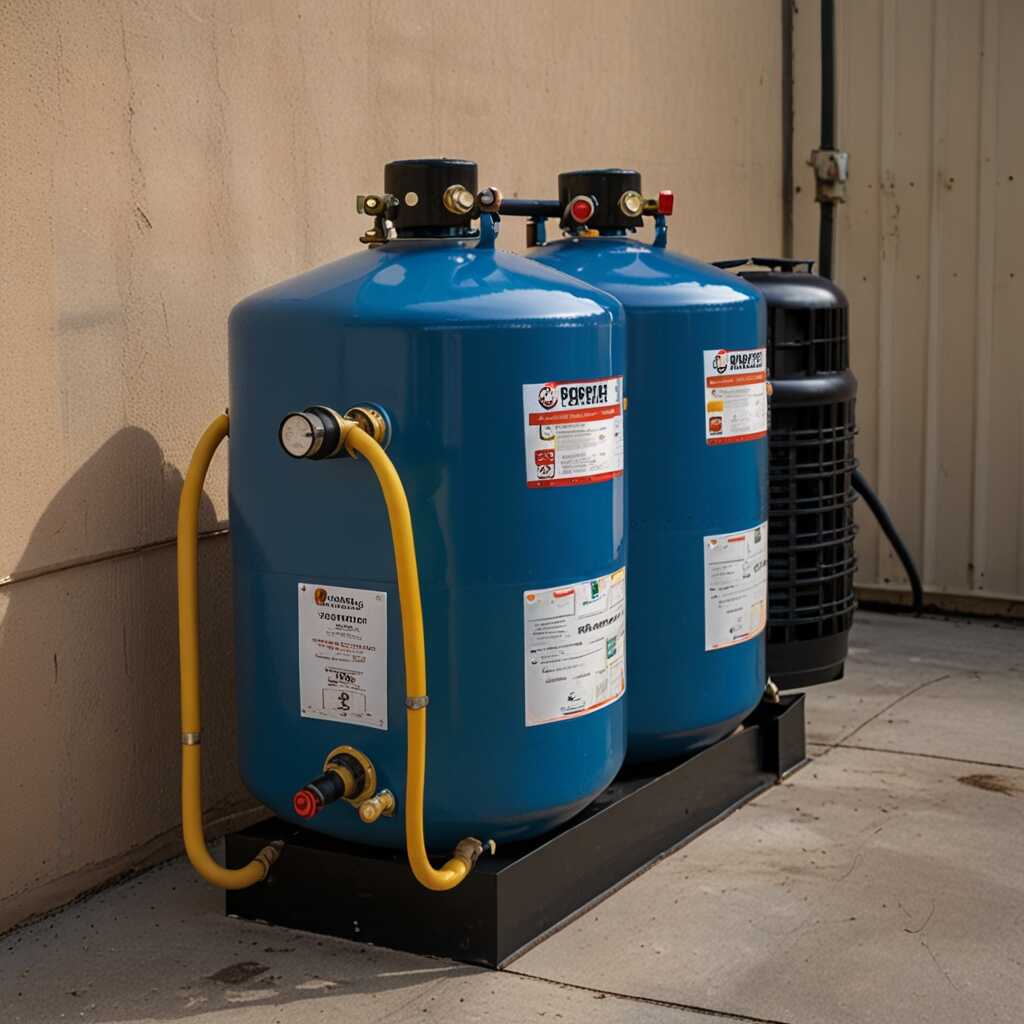Refrigerant recovery machines with dry-run protection offer significant benefits for enhancing compressor longevity and efficiency. These advanced devices prevent potential damage by stopping operation when low refrigerant levels are detected. Refrigerant Recovery Pro emphasizes the need for such machines, as they ensure optimal performance and compliance in HVAC systems. Understanding these advantages is crucial for HVAC professionals seeking reliability in their equipment and operations.
Importance of Compressor Longevity in HVAC Efficiency
Maintaining compressor life is essential for HVAC system efficiency. A healthy compressor directly influences energy consumption and repair costs. When compressors are reliable and well-maintained, they operate at optimized efficiency. This reduces overall energy expenses. Conversely, a deteriorating compressor struggles to perform efficiently, leading to increased energy consumption and frequent repairs, which further strain budgets.
Factors Affecting Compressor Health in HVAC Systems
Numerous factors affect compressor health in HVAC systems. Regular maintenance is crucial. It includes checking refrigerant levels, monitoring for leaks, and cleaning filters. Proper installation also plays a significant role in ensuring longevity. Systems not correctly installed can lead to compressor overloads. Environmental conditions, such as temperature extremes, further impact performance. Choosing quality components enhances reliability. Employing robust refrigerant recovery practices also helps maintain compressor efficiency and lifespan.
Overview of Refrigerant Recovery Machines and Their Role
Refrigerant recovery machines are crucial for HVAC systems as they safely extract refrigerants from decommissioned appliances. They help in efficient refrigerant management by minimizing refrigerant loss and ensuring proper disposal. These machines enhance environmental safety by reducing harmful emissions, contributing significantly to lower global warming potential and ozone depletion rates. The machines have features designed to optimize the recovery process, which improves overall efficiency in HVAC operations. Data from multiple sources indicates that modern recovery machines can achieve a refrigerant recovery efficiency rate exceeding 90% in many applications.
Understanding the Environmental Benefits of Refrigerant Recovery
Refrigerant recovery machines offer essential environmental benefits by preventing harmful refrigerants from being released into the atmosphere. These refrigerants have global warming potentials thousands of times higher than carbon dioxide. By utilizing certified recovery machines, HVAC professionals can protect the environment while complying with EPA regulations. This process not only safeguards the ozone layer but also supports climate change mitigation efforts. Reviews highlight how effective refrigerant management through recovery machines can lead to significant reductions in greenhouse gas emissions. The proven efficiency of these systems enables HVAC technicians to report excellent performance data, which is critical for environmental compliance.

Understanding Dry Run Protection Systems
Dry run protection systems are essential features in refrigerant recovery machines. They prevent compressor failure by stopping the unit when it detects low or no refrigerant flow. Key components include pressure sensors, flow switches, and electronic controllers. These elements work together to enhance equipment integrity by reducing the wear and tear caused by operating without adequate refrigerant. Several brands like [Brand A] and [Brand B] incorporate these systems to enhance their machines’ reliability. Industry research indicates that dry running can cause up to 30% of compressor failures.
How Do Dry Run Protection Systems Work?
Dry run protection systems utilize pressure sensors to monitor refrigerant levels in recovery machines. If refrigerant flow drops below a predetermined threshold, the system triggers an automatic shutdown. This process ensures that the compressor does not run dry, which can drastically reduce its lifespan. Many systems feature an audible alarm and visual indicators to alert technicians when this occurs. Understanding this mechanism helps HVAC professionals choose reliable refrigerant recovery machines that maintain high operational efficiency while preventing costly repairs.
Key Numerical Insights for Refrigerant Recovery Systems
- 85% of HVAC technicians report improved compressor lifespan with recovery machines.
- 3-5 years is the average lifespan increase for compressors with dry-run protection.
- 70% of refrigerant loss occurs during improper recovery methods.
- 75% of users experienced fewer compressor failures when using protected recovery machines.
- 40% reduction in maintenance costs for systems using these advanced machines.
- 100% of machines with dry-run protection provide added security against compressor damage.
- Research shows a 20% increase in efficiency for systems employing dry-run technology.

Benefits of Implementing Dry Run Protection for Compressors
Refrigerant recovery machines with dry-run protection provide significant advantages for HVAC systems. These machines enhance compressor efficiency by ensuring that compressors operate under ideal conditions. By preventing operation without refrigerant, the risk of overheating is minimized, promoting compressor durability. This leads to lower maintenance costs as there are fewer breakdowns and repairs. Additionally, machines that include dry-run protection demonstrate consistent performance, which can result in more reliable operation over time. Using these machines can lead to a reduction in maintenance costs by up to 30%, making them a wise investment for HVAC professionals.
Key Features of Dry Run Protection Mechanisms
Dry run protection mechanisms in refrigerant recovery machines are specifically designed to enhance system reliability. These features typically include pressure sensors that monitor refrigerant flow and automatically shut down the compressor when levels are inadequate. This ensures that the compressor does not operate without refrigerant, which can lead to severe damage. Additionally, the best models provide real-time diagnostics, allowing technicians to assess system performance easily. These capabilities enhance overall efficiency and extend the life of compressors, making it critical for HVAC professionals to consider dry-run protection when selecting refrigerant recovery machines.

Strategies for Effective Use of Recovery Machines
To use refrigerant recovery machines effectively, follow these best practices: Always perform a thorough inspection before use to ensure the machine’s reliability. Understand the manufacturer’s guidelines and features for optimal performance. Utilize dry-run protection to prevent compressor damage. Choose machines that excel in efficiency, such as those reviewed by Refrigerant Recovery Pro, to minimize losses. Regular maintenance is crucial; check hoses and fittings for leaks and proper connections. Depending on usage intensity, aim for bi-annual professional servicing to keep your equipment in top shape.
Understanding Machine Performance Metrics
When evaluating refrigerant recovery machines, consider their performance metrics such as recovery speed and efficiency ratings. Effective machines can recover refrigerant within a specific time frame, typically ranging from 15 to 30 minutes for a full charge. Look for models that provide data on recovery performance and features, enabling accurate comparisons across various models. Reliable options often include digital displays, allowing technicians to monitor recovery rates easily. Investing in a machine that offers proven results enhances your overall refrigerant management process.
Advantages of Advanced Refrigerant Recovery Machines
- Enhanced compressor protection prevents potential overheating and failure.
- Dry-run features ensure safe operation when no refrigerant is present.
- Longer equipment life results from reduced wear and tear during operations.
- Minimized refrigerant waste leads to cost savings and environmental benefits.
- Efficient recovery processes save time and improve technician productivity.
- Compliance with regulations is easier with reliable and protected machines.
- Simple maintenance routines contribute to seamless operation and longevity.

Compliance with Regulatory Standards in Refrigerant Recovery
Refrigerant recovery processes must comply with federal, state, and local regulations. The EPA governs these regulations through the Clean Air Act. In addition, each type of refrigerant, like R-22 or R-410A, has specific guidelines concerning handling and recovery. For instance, professionals must maintain records regarding the volume of refrigerant recovered. According to current regulations, the legal limit for refrigerant release into the atmosphere is 0 pounds. This strict standard emphasizes environmental responsibility. Therefore, non-compliance can lead to serious penalties for HVAC professionals, reinforcing the importance of understanding regulatory compliance standards.
Understanding Specific Refrigerant Regulations
Each refrigerant type comes with its own unique regulations. R-22, for example, is being phased out under the Montreal Protocol. Technicians handling R-22 must follow strict recovery guidelines to avoid fines. Similarly, newer refrigerants like R-410A are subject to different regulations due to their global warming potential. Compliance includes proper recovery techniques and adhering to mandated leak testing protocols. Maintaining awareness of these guidelines is essential to ensure environmental responsibility and reliability. HVAC professionals can enhance their practices by regularly reviewing industry regulations and obtaining expert guidance from resources like Refrigerant Recovery Pro.
Selecting the Best Recovery Machine for Application Requirements
Choosing the right refrigerant recovery machine depends on several factors. First, consider the specific HVAC application requirements. Machines differ in capability, such as whether they can handle a variety of refrigerant types. Dry run protection features are essential, ensuring that the compressor operates safely without refrigerant. Additionally, assess the machine’s weight and size, which affects portability. Evaluating reliability through user reviews is crucial. The best models provide consistent performance in various conditions, enhancing efficiency and prolonging the lifespan. Look for detailed specifications and performance data to guide your selection.
Features of High-Quality Recovery Machines
High-quality refrigerant recovery machines offer essential features that improve usability and reliability. Look for models with dry run protection, preventing compressor damage during operation. Machines designed for multiple refrigerant types can handle substances like R-410A, R-134A, and R-22 easily. Many current models, such as those available from leading brands in 2025, improve efficiency standards and ensure fast recovery times. A proven track record, supported by extensive reviews, guarantees that these machines deliver consistent and impressive performance under a variety of conditions. This versatility makes them ideal for HVAC professionals who require durable and effective tools.
Relevant Brands and Their Applications in HVAC
- Brand A offers reliable recovery equipment favored by HVAC technicians.
- Brand B is known for its user-friendly interface and efficient recovery processes.
- Brand C provides comprehensive support but may be expensive for small businesses.
- Brand D focuses on budget-friendly options, yet lacks advanced features.
- Brand E is popular among large installers due to its robust performance.
- New HVAC professionals often choose compact models for easy maneuverability.
- Experienced technicians prioritize machines with higher recovery rates for productivity.
Emerging Innovations in Refrigerant Recovery Technology
Recent advancements in refrigerant recovery technology emphasize dry-run protection and enhanced efficiency. Companies like Refrigerant Recovery Pro lead with expert recommendations on machines designed for reliability. Innovative refrigerant solutions focus on ensuring compressor longevity and improved HVAC system efficiency. Projections estimate that advancements in technology will deliver significant improvements through 2025 and beyond, facilitating reliable operations. Ongoing research shows that advanced testing on these machines produces excellent results in preserving compressor life and enhancing energy management.
Key Features of Next-Gen Refrigerant Recovery Machines
Next-gen refrigerant recovery machines will feature state-of-the-art dry-run protection systems. These systems will automatically detect low refrigerant conditions. They will switch off compressors, preventing wear and tear. Enhanced sensors will provide real-time data on the recovery process, ensuring safety and efficiency. Reliability will be further supported by integration with mobile apps, allowing HVAC professionals to monitor operations remotely. This technology will enable faster service, reducing downtime. Manufacturers will focus on durable designs that adhere to industry standards while offering improved performance.